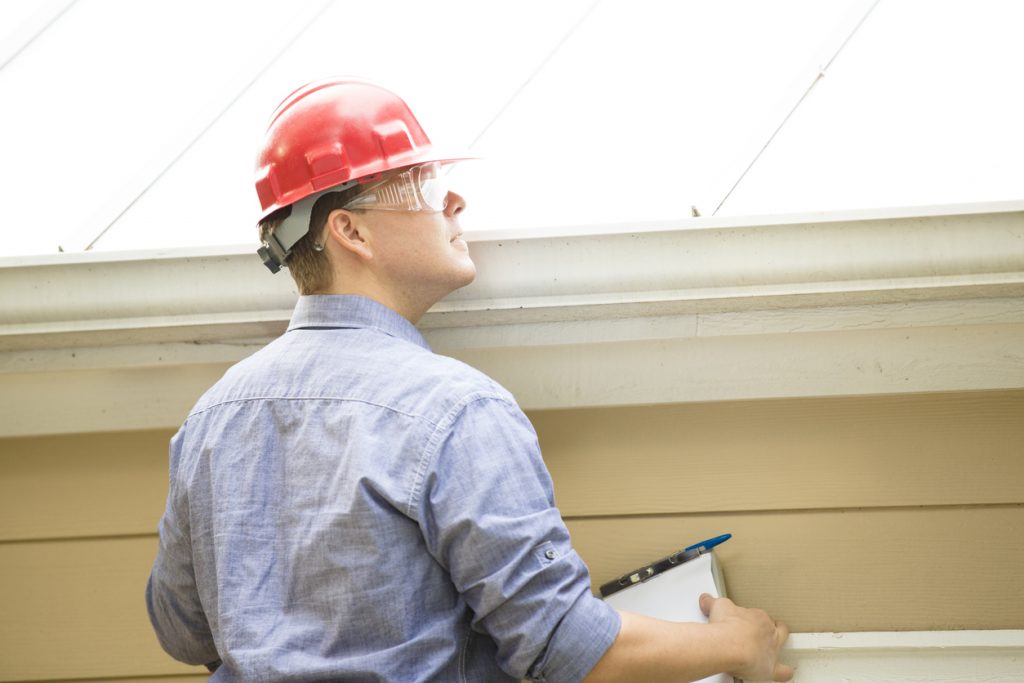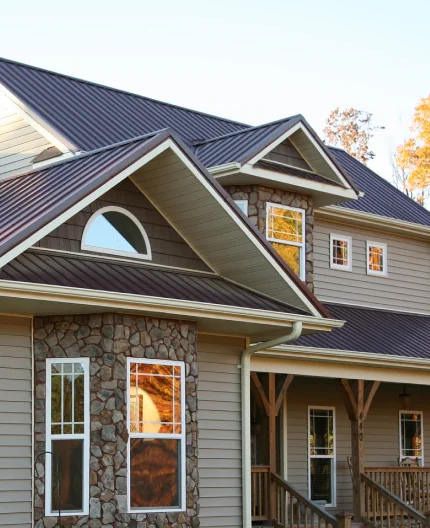Buying or Selling a House? Here’s How a Home Inspection Works
Published on Tuesday November 1, 2016A home inspection helps ID areas of the home that need an update or repair. The home inspection lets a buyer make an informed decision when purchasing a property.
Jessica Richardson, a realtor serving the Washington, D.C. metro area, estimates that a whopping 99% of buyers opt for a home inspection before purchasing a home.
“A buyer’s home inspection,” she notes, “is considered a standard part of the contract sales agreement.”
What does a home inspection include?
Where does a big-ticket item like a roof land on the home inspection checklist?
The American Society of Home Inspectors (ASHI) lists 10 standards of practice for performing a home inspection. The roof, appropriately enough, is near the top:
- Structural system
- Exterior
- Roof system
- Plumbing system
- Electrical system
- Heating system
- Air conditioning systems
- Interior
- Insulation and ventilation
- Fireplaces and solid fuel-burning appliances
Home inspectors can only inspect the parts of these systems that are visible. They aren’t going to open walls or use a fiber optic camera to inspect your sewer lines as part of a routine home inspection.
Sometimes, an inspector notes a potential defect. This gives buyers the opportunity to call in a system expert for a more detailed analysis before making a purchase.
What do the inspectors look for during a home inspection?

Structure (The Bones of the House)
A home must be structurally sound to be safely occupied. Makes sense, right? That’s why the inspection begins with the structural system, including the foundation and framing.
The inspector will access attics and crawlspaces to inspect the foundation, floor, wall, ceiling and roof structures. They will look for moisture, cracks or other signs of damage, like visible evidence of termites.
Outside the Home
A home’s exterior reveals a lot of potential problems and can identify the causes of structural issues. The home inspector should examine sidewalks, siding, trim, drainage, porches, doors, railings and more. the home inspection should include notes of any defect, like missing trim, loose railings or wobbly floorboards on a deck.
Roof and Roof Drainage
Home inspectors look at the condition of the roofing materials, like shingles and flashing. The drainage systems, including gutters and downspouts, are closely studied. Objects on the roof, like pipes and vents, are also reviewed.
“A good inspector will provide very important information about your roof, including its age, roof draining systems, buckled shingles and loose gutters and downspouts,” REALTORMag says. “They should also inform you of the condition of any skylights and chimneys as well as the potential for pooling water.”
Even if a home inspector doesn’t note any visible defects, the age of the existing roof should be considered. You should think about a roof replacement before selling.
Insurance companies are reducing or restricting coverage on homes with dated roofs. Why? Because inadequate ventilation can prematurely age a roof, causing it to fail before its time.
Plumbing
Most home plumbing isn’t visible. This makes it very difficult to visually review as part of a standard home inspection.
There are, however, many plumbing-related items that inspectors can check, including:
- Fixtures and faucets
- Hot water tanks
- Flues and chimneys
- Fuel tanks
- Sump pumps and sewage grinders
A home inspector will see if any of these items appear to be leaking water or fuel. They will note the type of lines (PVC, galvanized, copper) and any defects that may be visible from the basement or other unfinished areas.
Home inspectors don’t test functionality of items like sump pumps or chimneys. Knowing that a home has these features can help you plan future maintenance. You can also define inclusions for a home warranty, since you may not be able to prove functionality prior to purchase.

Electrical
An electrical system inspection tells you your service box rating and may describe the condition of the system. The home inspector should be able to identify unsafe or dysfunctional outlets, as well as any panel box items that don’t comply with current codes. This information tells you if you have enough power to hook up your electric dryer or switch from an oil to an electric heating system, for example.
HVAC
The home inspector should note the type of HVAC system and its approximate age, as well as any visible defects like cracks or leaks. The inspector also checks the visible components of heating vent systems, such as flues and vents.
If the outside temperature permits, the inspector may test the system and may note any temperature change that results.
Inside the Home
Walls, ceilings and flooring may be visible during a walk-through. You, however, were busy falling in love with the hardwood floors or the perfect floor plan. You may not have noticed deterioration around old windows, or checked to see that the oven works.
A home inspector notes findings like these. While the inspector may not check the function of every appliance feature, you should know if an appliance won’t power on.
Insulation & Ventilation
Proper insulation and ventilation can reduce energy costs and prevent moisture problems. Home inspectors can identify the type and amount of insulation in the unfinished areas. An inspector also studies the ventilation and exhaust system in bathrooms, the kitchen, basement and attic.
Fireplaces
Fireplaces and fuel-burning appliances like wood burners can create fire hazards if they are not properly installed, maintained or operated. A home inspector will record obvious damage or inadequacies, such as missing safety doors or improper venting.
Since a home inspector cannot perform an internal inspection, it is wise to consult a Chimney Safety Institute of America (CSIA) certified chimney sweep to perform the appropriate level of inspection.
Ready to prepare for your own home inspection? ASHI offers a fantastic virtual home inspection tool on their website that walks you the items that certified home inspectors look for.
Remember that your home inspector is there to share his/her knowledge with you—don’t be afraid to ask your home inspector questions about any findings that you don’t understand.
Need a roof replacement? Give Long Roofing a call.
A new roof can be one of the most important improvements you make to your home before you sell. Need a roof replacement?
Contact the team at Long online to get a price, schedule a free, in-home consultation or find answers to any home roofing questions. Ask us about our industry-leading 50-year roofing warranty!
Interested in Long Home Products?
See our special offers now.
*Excludes labor. Subject to credit approval.
**Excludes labor. Subject to credit approval.
One-day installs contingent upon municipal rules and regulations.
By submitting a form, I authorize Long Home to contact me with information about its products and services via mail, email, phone and/or text at the contact information provided, even if I am on the national do not call list. Long Home may use automated telephone technology to initiate calls to its customers. Calls and in person estimates may be recorded for quality and training purposes.








